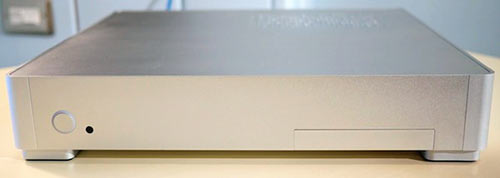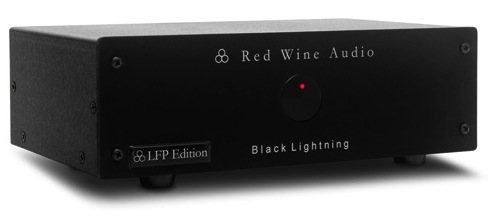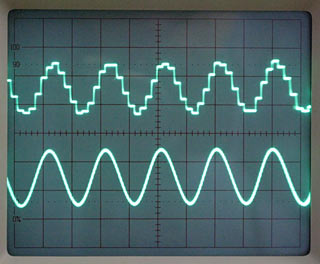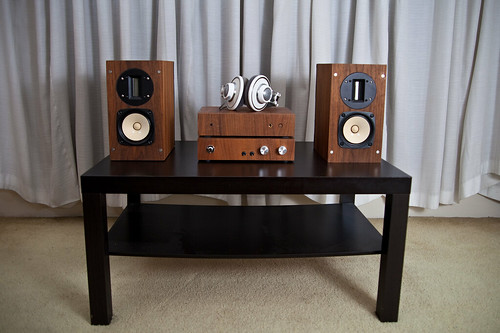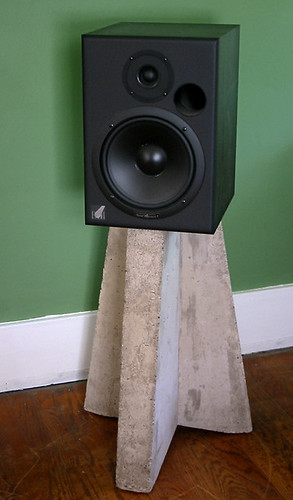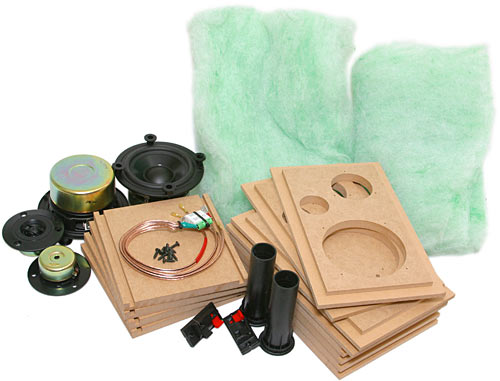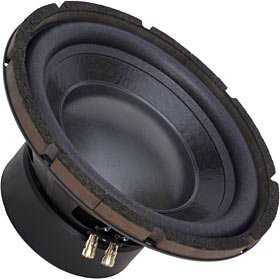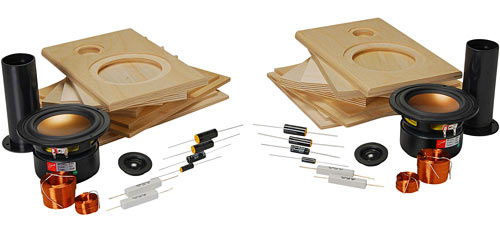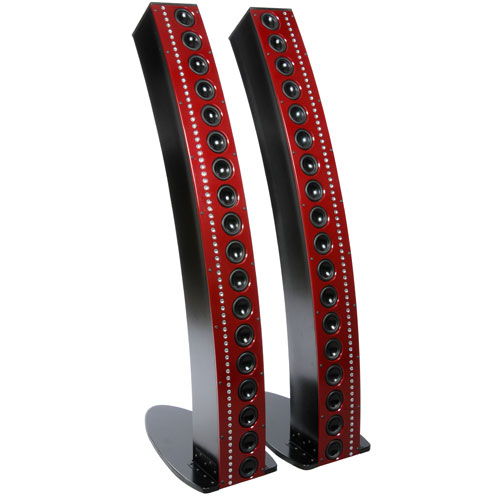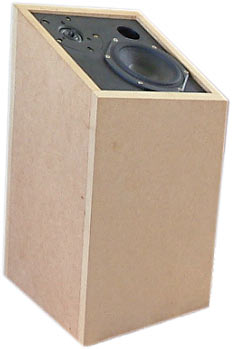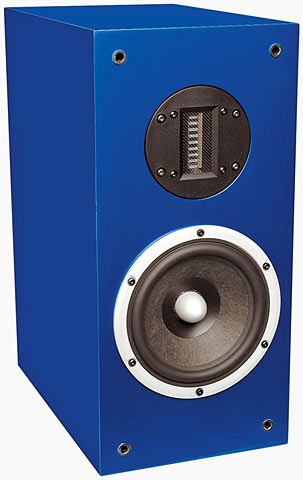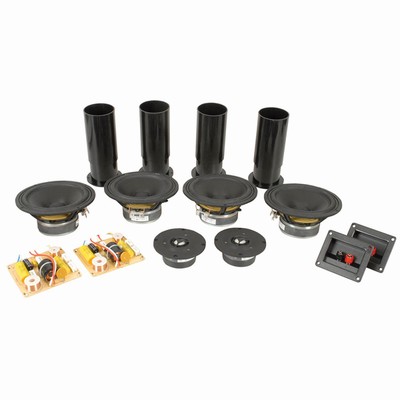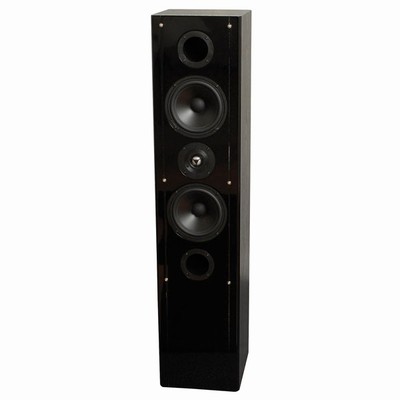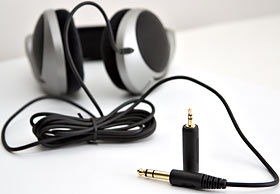A reader writes:
I have been rereading some of your stuff concerning speaker building lately and have decided to possibly make it a hobby. A mate and I have a bunch of car audio stuff we pulled out of his car that we would like to turn into a garage/shed powered speaker box. I have been looking on the web and there seems to be about a million different opinions as to various aspects of the build including:
* if we can use the car amp
* if a head deck needs to be involved
* power supply – some say even an old computer PSU can be used some say that the current requirements would be better suited to a car battery with a charger attached (seems a little cumbersome)So I thought I would send a quick email to great and powerful Tech Master who started me down on this road for some clarification. Help?
Mitch
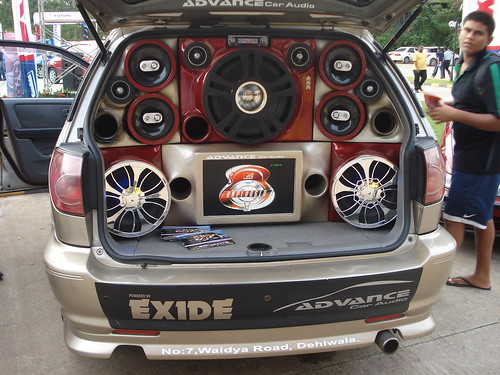
(Image source: Flickr user Nazly)
Just lever 'em out, and shovel 'em into the house!
Yes, you can make perfectly good household speakers out of car-audio components. Actually, car radio tuners can be better than the home-hi-fi kind, because the extremely variable reception conditions for mobile radio, and the lousy antennas they have to use, mean even quite cheap car stereos often have very good RF sections.
The problem with powering car amplifiers at home is, as you've already discovered, that they can want a lot of current at 12 volts.
First, definitions: You standard "car stereo" has one "head unit" in the dashboard, which combines all of the signal sources - tuner, cassette deck, CD player, line-in socket, memory-card socket for MP3s, whatever - and all of the amplifiers, in one box. These days it probably has four outputs, for two front and two rear speakers. Take such an all-in-one head unit and some speakers and a twelve-volt power supply and hook them all up at home and they'll work the same as they did in the car.
Fancier car audio systems have amplifiers separate from the head unit, and may have multiple head components as well, possibly including a separate satellite-navigation screen, DVD player, et cetera.
A separate car-audio amplifier is basically the same as a separate home hi-fi amplifier: It accepts line-level input, and amplifies it to drive speakers. The input has to come from other components. Fancy car-audio head units may have no amplifiers of their own at all. Again, though, you can run the whole system spread out on a table at home, if you want to and have a suitable power supply.
Standard cheap car-audio amplifiers, like the ones that're built into low-cost one-piece head units, have a maximum output voltage no higher than the 12 volts they run from - 13.8 volts, actually, when the engine's running. Car speakers have a nominal impedance of four ohms - home hi-fi speakers are usually nominally eight ohms - so you can use Ohm's Law to figure out the total possible output current. Ohm's Law says current equals voltage divided by resistance (I = V/R), 13.8 volts divided by four ohms gives 3.45 amps, so that's the most that such an amplifier can output per channel. Each channel is basically its own separate amplifier.
(The "nominal" in "nominal impedance" just means that that's the approximate impedance the speaker presents if you run DC electricity through it. The actual impedance varies quite widely depending on the frequency of the incoming alternating-current music signal, but overall it'll be close enough to the rated nominal impedance for rough-calculation purposes.)
13.8 volts times 3.45 amps is 47.61 watts; an amp with four output channels could therefore output 190 watts, which is more than enough to make the inside of your car very loud, even given the not-so-great efficiency of a lot of car speakers.
(Car-audio equipment of all sorts often has outrageously high "peak music power output" numbers printed on it; this problem may be even worse in car audio than it is in cheap home hi-fi equipment.)
Realistically, to avoid hideous distortion from winding the amp up all the way and to also take into account the rather-less-than-100% efficiency of all amplifiers, a ballpark figure of 25 watts of input power per channel, at the 12 volts you'll probably be running it from at home, is likely to be about the real-world maximum for a basic car-audio head unit. Call it 24 watts for a nice round number of two amps, at 12 volts, per output channel.
More powerful car amplifiers step up their input voltage so they can deliver more volts of output, and the sky's the limit for those. But you can run any amp expecting 12-volt power input from any 12-volt source. As long as you keep the volume low enough that the power supply isn't overloaded, you can probably even run some preposterous multi-kilowatt boom-car amp, at very low volume settings, from a one-amp plugpack.
(This is related to the reason why it's not dangerous to touch both terminals of a car battery that can deliver hundreds of amps into a load with a low enough resistance, like the starter motor. Your body has a far higher resistance, so far less current flows. There are also 12V power supplies with very low output ratings, like say the plugpack for an ancient calculator; you might be able to blow one of those up by just turning on a 12V amp connected to it. You also might be able to damage a 12V amp by plugging an old-style heavyweight unregulated linear power supply into it, because those deliver root-two times their rated voltage when they're unloaded, and seventeen volts might be too much for the amp. All care, no responsibility. Et cetera.)
A PC power supply actually is a pretty good 12V source for running car audio gear at home. It'll be able to deliver a decent number of amps at 12 volts (the yellow wires coming out of standard PC PSUs are +12V), and it should also deal elegantly with overload, and just shut down if you ask for too much current. Modern PSUs may have split 12V rails and other complexities, but an old one out of a superannuated Pentium II box should do nicely for most purposes. Since most home-audio listening happens at only a few watts per channel, unless you want Party Volume of want to hear the music over your power tools, this option should be fine.
A battery charger and car battery will let you run a car amp at maximum power - well, until the battery goes flat because the charger can't keep up with the amplifier load, at any rate. It is as you say not a very elegant solution, though, and the charger may get confused when you turn the amp up and it suddenly sees a strangely high load. And the output from cheap car chargers can be really filthy, noise-wise, too. Car amps generally deal very well with distortion in their incoming power, but you may still hear a whine or ticking noise.
You can also, however, plug car speakers into a home hi-fi amplifier. A given volume setting will give you more noise from a four-ohm speaker than from the eight-ohm speakers home amplifiers expect, but pretty much any amp should work fine with four-ohm-nominal speakers; some home speakers actually have six- or four-ohm nominal impedance. Any old mini-system hi-fi amp will do, too, you don't need a fancy expensive one.
Another way car-audio enthusiasts get more noise out of an amplifier is by wiring multiple four-ohm-nominal speaker drivers in parallel. Two 4-ohm drivers in parallel give you a nominal-2-ohm speaker, three in parallel give 1.33 ohms, four in parallel give one ohm, and so on. You have to be careful connecting speakers with very low nominal impedance to most amplifiers; it usually won't cause a problem if keep the volume setting very low, but one-ohm or lower speaker arrays may look like a dead short to any amp that isn't designed, as some car amps are, to drive them.
You can also get small 12V amplifiers intended for use in home and mobile applications, which are descendants of the popular, and distinctive-looking, Sonic Impact T-Amp:

(Image source: Flickr user animakitty)
The modern ones are easy to spot; they all have extruded aluminium cases, often anodised a cheerful colour, and a few chunky controls on the front:
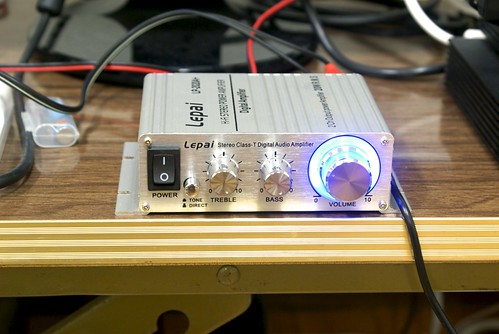
(Image source: Flickr user icoro.photos)
These little amps may be sonically superior to cheap car-audio amplifiers. The radio tuner in a car stereo may have to be good, but car amps can be quite noisy and distorted, because that's not very noticeable in the lousy acoustic environment of the average car. These little units all use similar class-D amplifier chips, which are good for maybe 15 clean output watts per channel or 25 watts flat out. For full power you have to run them from something with at least a five-amp power rating - so, a car electrical system or computer power supply, or a laptop-power-supply-style 12V PSU, which last is what they come with if you buy one with PSU included. Again, though, you can hook up a smaller 12V plugpack if you like, and just keep the volume low.
(Some of these little amps have a USB socket on the front panel, too. In the cheap ones, only have the power pins will be connected, so you can use that socket to charge most phones or MP3 players, but you can't play MP3s off a thumb drive.)
These little amps may or may not sound any better than a cheap car head unit, and all they are is an amplifier - no tuner, CD player or whatever. But they look a lot better indoors than a bare car head unit, and the going rate for one without a power supply is under $US20 delivered.
As I've mentioned before, you can find these amps by searching for "class D" or "class T" (Tripath's trademarked version of class D). You'll find the very cheapest ones if you just search for 12V amps, though. You can get these same chips on little amp-module circuit boards, too, for hobbyists to install in their own enclosures, like a normal sort of amplifier enclosure or powered speakers. The above search is sorted by price, so finds lots of those little modules before it gets to the assembled amplifiers.
Car speakers are a great choice if you want to play with transmission-line speakers, too. The basic transmission-line design has a single widerange driver at one end of a folded tube; here's one under construction:

(Image source: Flickr user Moisturizing Tranquilizers)
A cheap six-by-nine oval car driver with a separate tweeter and/or midrange on a bridge in the middle of it is an excellent low-cost choice for a speaker like this.
